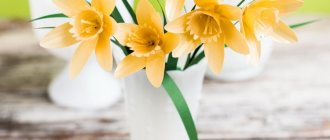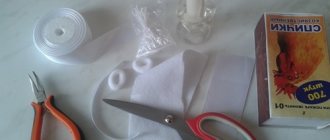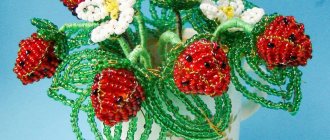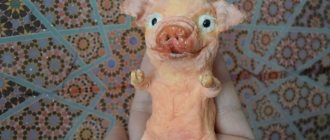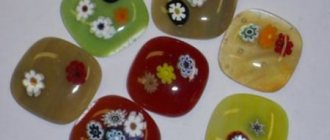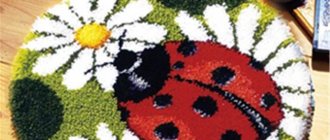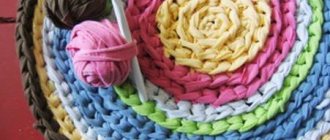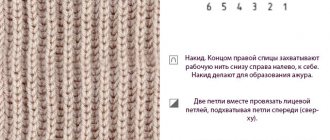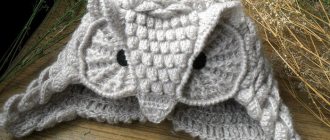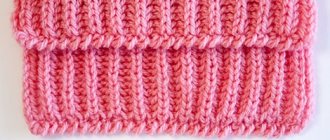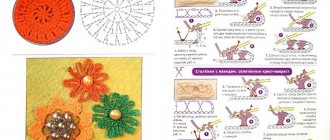Where can they be used?
Flowers, lace petals, openwork leaves make any product delicate and airy: brooches, hats, berets and dresses. A crocheted rose is suitable for creating designer earrings, headbands, bracelets, and hairpins.
Knitted napkins, vases, vintage flowerpots and decorative panels with homemade flowers fill the house with warmth and comfort. Motifs from knitted roses can be combined into a beautiful blanket or bedspread.
Wicker and knitted backpacks and shopping baskets are at the peak of popularity. Rose lace will decorate any bag and make its owner stand out from the crowd. Those who like to be original collect whole bouquets of openwork flowers and use them to decorate gifts and decorate the New Year tree.
Fillet knitting of small roses
Knitting small roses using the fillet method gives wide scope for creativity:
- use elements in the decoration of blouses and tops;
- put the motif in a separate strip - longitudinal or transverse;
- create an interesting composition from multi-colored roses;
- decorate the product with a wavy border.
Before you start knitting, you need to count the number of cells in the pattern. Each cell corresponds to 2 VP and 1 VP, so the initial chain is calculated by the formula: number of cells * 3 + 1 VP.
Read
Crochet Stesha doll: patterns and description of knitting
Next, the rose is knitted according to the pattern:
- for empty cells – 2 VP;
- in filled cells – 2 CCH;
- between them - 1 dc.
The process of knitting roses can be seen in detail in the video.
The material in this article will help you learn how to cross-stitch napkins according to the pattern.
Petal method
The petal method allows you to make the rose more lush and voluminous. The technique is very simple, but it allows you to fantasize about the size, splendor, and shape of the product.
First, we will tie the three lower petals of the rose, following the instructions:
- We knit 2 chain loops, in the second loop from the hook we knit 6 single crochets.
- In the 2nd row, we knit 2 single crochets into all the loops of the first row.
- In the 3rd row we make an increase of two single crochets through a loop. The result is 18 loops.
- In the 4th row we knit an increase in every third loop. We get additional 6 columns.
- In the 5th row we increase every fourth loop. We get another 30 loops.
- In the 6th row we knit 4 simple stitches, 5 half stitches, 5 stitches. We knit two increases in the next two loops. We repeat the same sequence of actions, but in reverse order: 5 single crochets, 5 half double crochets, 4 single crochets. Secure the thread with a connecting loop.
- We connect three rose petals into a bud and stitch it with thread.
Let's start knitting three middle rose petals:
- We knit the first 5 rows in the same way as the lower petals.
- In the 6th row we make an increase in every fifth loop.
- In the 7th row we make an increase in every sixth loop. We get 42 loops.
- In the 8th row we knit 6 single crochets, 7 half double crochets, 6 single crochets, 2 increases with single crochets. Let's make a small picot by knitting 3 air loops and a connecting loop in the original column. Let's repeat the sequence of actions in reverse order, starting with increases.
Add the middle petals to the inner ones and secure with thread.
Let's start knitting 4 outer rose petals:
- We knit the first 7 rows of the rose in the same way as for the middle petals.
- In the 8th row we make an increase in every seventh loop. We get 48 columns.
- In the 9th row we knit 7 single crochets, 34 half double crochets, 7 single crochets.
- In the 10th circular row we make 7 single crochets, 17 increases, picot, 17 increases, 7 single crochets.
Attach the 4 upper petals to the bud and secure with thread.
If desired, you can knit a few more petals of a larger diameter. The rose will turn out more realistic when using different shades of threads.
Flat rose for Irish lace
Irish lace is a knitting technique in which individual flat motifs are joined into a large fabric using a base fabric or directly. Popular elements are leaves, flowers, complex curls. Each element of Irish lace begins with a bourdon - a base ring.
Making a bourdon
Bourdon is used as a ring of air loops, but makes the central part of the flower stronger.
- Fold the thread 4 times so that 2 loops appear on one side, and a loop and a tail of 2 threads appear on the other. One of these threads will remain working.
- From a single loop we knit 3 air loops and secure them with a single crochet into a ring.
- Next, we tie a chain of 4 threads with single crochets and tie the resulting rope into a knot.
- Secure the knot by connecting the working loop to the first column.
When the core of the rose is ready, we move on to knitting the petals.
Creating petals
The 4 threads remaining from creating the bourdon will serve as the basis for the first row of petals.
- We knit 10 single crochets around the threads and secure the petal at the core with a connecting stitch. In this way we knit the entire bourdon. You will get 5-6 petals.
- Having knitted the first row, we go upstairs and do the same operations for the 2nd and 3rd rows until the lace of 4 threads runs out.
- To create large petals, cast on 10 loops and secure the resulting arch with a connecting loop at some distance from the beginning. We tie the petals around the product in a circle.
- We tie all the petals, following the sequence: 2 single crochet columns, half crochet, 9 single crochet columns, half crochet, 2 single crochet columns.
- We make 4 lifting loops.
- We insert a hook into the top of one of the arches and knit 12 chain loops, securing the chain at the top of the adjacent petal. We tie the whole rose in this way.
- We tie the upper petals, following the sequence: 3 single crochets, 2 half double crochets, 11 single crochets, 2 half double crochets, 3 single crochets.
- We tie the top row of loops with single crochets and, if desired, with a crab stitch pattern. The rose is ready.
A rose crocheted using the Irish lace technique is the most difficult to make, but very impressive. There are dozens of master classes online where other floral motifs are discussed in detail. By combining them into one canvas, we get a designer piece of clothing or home textiles.
author All posts by the author (33)
DIY thread flowers
With the arrival of spring, I want to do something special for my mother, grandmother, teacher or friend. A gift like handmade thread flowers will delight any woman, because the bright buds will never fade. Even a small child can make this type of craft, because there are many step-by-step options for making simple and complex ones.
Flowers made of threads
Almost everyone has threads at home, so any will do, but it is advisable to choose the thickest ones. This is important for creating lush petals. Also, such a decorative decoration can be used not only as a bouquet. A thread flower can become an elegant brooch on clothes, a bright decor for curtains or an element of a wreath.
A very original composition is obtained by combining colors made using different techniques. Buds can be made not only from threads, but also knitted from yarn, glued from satin ribbon, or made on a special loom. The latter can be bought at a sewing store, or made at home from plywood.
Flowers in different techniques
Materials
Those who have been making fakes for a long time will probably find a list of necessary accessories for making flowers. A novice needlewoman will have to purchase everything from scratch; everything she needs can be found in a sewing store.
Important! You should buy a certain minimum of materials for manufacturing. In the future, at your own discretion, it will be possible to supplement crafts with beads, rhinestones, and ribbons.
The most necessary materials for creating flowers from threads:
- colored ribbons;
- scraps of fabric (different as desired);
- floss or yarn;
- copper wire;
- cardboard;
- colored paper.
List of tools for creating buds:
- Crochet hook;
- pliers;
- scissors;
- lighter;
- candle;
- tweezers;
- wire cutters;
- glue;
- glue gun
You might be interested in What are non-flammable and fire-resistant fabrics
Colored wool threads
It’s worth taking a little closer look at yarn for making flowers. The thickness of the thread should be medium. If you only have thick ones, you can layer them - remove a couple of threads from them. The material suitable for creating petals is acrylic. The thread should be slightly fluffy and moderately stretchy, so that it is convenient to wind it on the wire.
Knitting needles are needed to form buds. Thick ones should be used for making large elements, thin ones for small fragments, for example, leaves. The same goes for wire: thick wire for making twigs and large flowers, thin wire for graceful petals and miniature details. Steel wire is needed for branches, and easily bendable copper wire is needed for flowers and foliage.
Materials for production
Additional materials you will need are cotton wool, acrylic paints and foam rubber. You can paint over the area of the wire where you accidentally missed winding the thread.
Important! Scissors must be sharp so that they are easy to use.
Preparation
Before you start making flowers from multi-colored threads and yarn with your own hands, you need to think through the concept. It is advisable to download a photo template with the desired flower from the Internet. To obtain a believable effect, you need to study all the details of the plant. Next, take measurements using a regular ruler or measuring tape.
Note! If the plant has a complex structure, then you need to draw its details on paper in advance.
Yarn selection
After measuring, you need to reproduce the most accurate copy of the colors. It is advisable not to deviate from the actual dimensions. You can also attach the wire to a real flower and copy the outline of its petals and leaves. The individual fragments are fastened together using the winding method.
